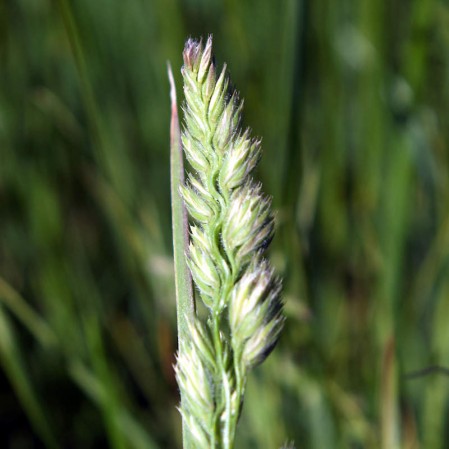Upland Wild Timothy Seeds
Muhlenbergia racemosa
- HOW TO GROW
- FAST FACTS
HOW TO GROW
Sowing: Direct sow in early spring, pressing the seed into the surface of the soil and compacting the soil very firmly. Keep the soil lightly moist until germination.
Growing: Water seedlings regularly until they become established. This plant prefers moist soil, though it tolerates drought and adapts to drier soil. It also adapts well to various soil types such as sand and clay. It will eventually spread by rhizomes and self-seeding. This plant makes an very good choice for erosion control, and also provides forage and cover for birds and other wildlife.
Seed Saving: At the end of the season, the seed heads will begin to ripen and turn white. Strip the fluffy seed heads from the stem. Separate the seed from the plant material. Store the seed in a cool, dry place.
FAST FACTS
Common Names: Marsh Muhly
Latin Name: Muhlenbergia racemosa
Species Origin: US Native Grass or Sedge
Type: Native Grasses, Warm Season
Life Cycle: Perennial
USDA Zones: 3, 4, 5, 6, 7, 8, 9
US Regions: Mountain, Arid/Desert, Plains/Texas, Midwest, Northern, Northeast
Seeds per Ounce: 100,000
Stratification: No Stratification
Germination Ease: No Stratification
Sunlight: Full Sun, Part Sun, Shade
Height: 24 Inches
Color: Green, Brown
Bloom Season: Blooms Late Summer, Blooms Early Fall
DESCRIPTION

HOW TO GROW
Sowing: Direct sow in early spring, pressing the seed into the surface of the soil and compacting the soil very firmly. Keep the soil lightly moist until germination.
Growing: Water seedlings regularly until they become established. This plant prefers moist soil, though it tolerates drought and adapts to drier soil. It also adapts well to various soil types such as sand and clay. It will eventually spread by rhizomes and self-seeding. This plant makes an very good choice for erosion control, and also provides forage and cover for birds and other wildlife.
Seed Saving: At the end of the season, the seed heads will begin to ripen and turn white. Strip the fluffy seed heads from the stem. Separate the seed from the plant material. Store the seed in a cool, dry place.
FAST FACTS
Common Names: Marsh Muhly
Latin Name: Muhlenbergia racemosa
Species Origin: US Native Grass or Sedge
Type: Native Grasses, Warm Season
Life Cycle: Perennial
USDA Zones: 3, 4, 5, 6, 7, 8, 9
US Regions: Mountain, Arid/Desert, Plains/Texas, Midwest, Northern, Northeast
Seeds per Ounce: 100,000
Stratification: No Stratification
Germination Ease: No Stratification
Sunlight: Full Sun, Part Sun, Shade
Height: 24 Inches
Color: Green, Brown
Bloom Season: Blooms Late Summer, Blooms Early Fall




